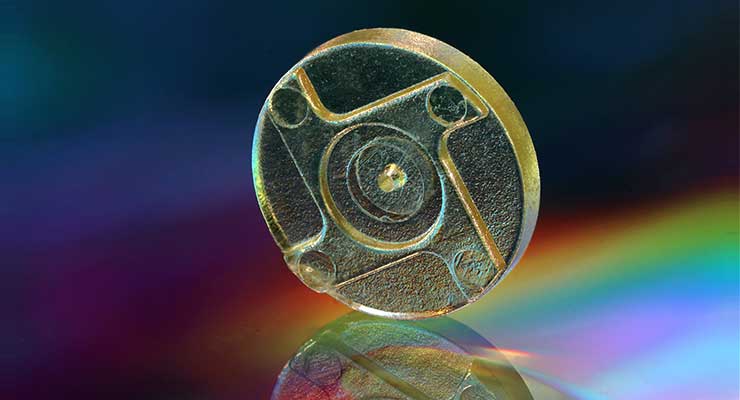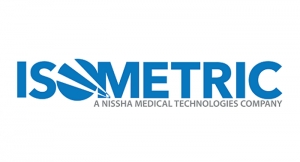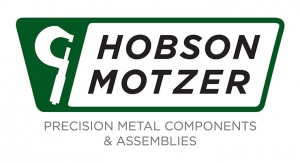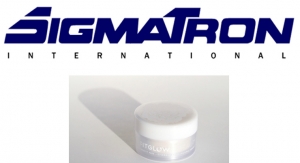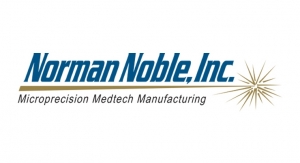Michael Barbella, Managing Editor10.01.20
Irie Felkner greeted this world a bit too early. Born at 27 weeks, the tiny pre-term infant weighed less than two pounds and spent her first post-womb days fighting for her life.
Irie was dealt the genetic equivalent of a 7-2 offset poker hand: The large blood vessel connecting her pulmonary artery and aorta failed to close, allowing blood from the two veins to mix. This biological blunder can cause the heart and lungs to work harder, and eventually the lungs to become congested.
The condition, known as patent ductus arteriosus (PDA), occurs in 5 to 10 percent of all children born with congenital heart disease. It is twice as likely to manifest itself in girls as in boys (Irie’s twin brother’s heart was normal), and is more common in babies born prematurely, according to industry data.
Fortunately for Irie, there was a technological fix for her anatomical anomaly—the Amplatzer Piccolo Occluder from Abbott Laboratories. Slightly larger than Roosevelt’s ear on the U.S. dime, the Occluder received U.S. Food and Drug Administration approval in January 2019.
Abbott’s Occluder, a minimally invasive self-expanding wire mesh, is inserted through a small leg incision and guided through blood vessels to the heart, where it is placed to seal the arterial opening. The product is designed to be inserted through the aortic or pulmonary artery, as well as to be retrieved and redeployed for optimal placement.
The Occluder device can be placed through either an anterograde (venous) or retrograde (arterial) approach. It has a 3mm-5mm diameter central waist and two retention discs with a 4mm-6.5mm diameter. The length between the two retention discs ranges from 2mm to 6mm.
The Occluder’s radiopaque marker bands at each end offer visibility during the fluoroscopy process. The device also features a hoop dispenser, a delivery wire, an occluder protector tube, and a micro screw attachment.
Within three days of receiving the Occluder, Irie was off the ventilator that had kept her alive. Today, she is a typical toddler, always on the move alongside her twin brother, and her heart disease is gone.
“You just have to live it to really fully appreciate what that device did for our daughter,” Irie’s father Matt said.
“What’s amazing is the device is so tiny—to go through the vein of a little baby that’s only one pound, 13 ounces,”Irie’s mother Crissa marveled in an Abbott-sponsored video. “I would definitely consider Abbott’s Piccolo device to be Irie’s lifesaver.”
Abbott cannot be given all the credit, though. Irie also owes her life to the technology that produces such tiny products, namely micromolding. The highly specialized manufacturing process can produce large volumes of minute, complex, and feature-rich components both efficiently and cost-effectively.
Micromolding has become an essential part of medtech product development in recent years as demand has grown for minimally invasive procedures and fixes to age-related conditions like glaucoma, cataracts, and macular degeneration. Manufacturers are constantly challenging micromolders to create ever-smaller parts with thinner walls and length-to diameter ratios that previously seemed theoretically impossible.
This article is featured in the MPO eBook "Molding Modern Medtech." Click here to download the eBook and finish reading this article.
Irie was dealt the genetic equivalent of a 7-2 offset poker hand: The large blood vessel connecting her pulmonary artery and aorta failed to close, allowing blood from the two veins to mix. This biological blunder can cause the heart and lungs to work harder, and eventually the lungs to become congested.
The condition, known as patent ductus arteriosus (PDA), occurs in 5 to 10 percent of all children born with congenital heart disease. It is twice as likely to manifest itself in girls as in boys (Irie’s twin brother’s heart was normal), and is more common in babies born prematurely, according to industry data.
Fortunately for Irie, there was a technological fix for her anatomical anomaly—the Amplatzer Piccolo Occluder from Abbott Laboratories. Slightly larger than Roosevelt’s ear on the U.S. dime, the Occluder received U.S. Food and Drug Administration approval in January 2019.
Abbott’s Occluder, a minimally invasive self-expanding wire mesh, is inserted through a small leg incision and guided through blood vessels to the heart, where it is placed to seal the arterial opening. The product is designed to be inserted through the aortic or pulmonary artery, as well as to be retrieved and redeployed for optimal placement.
The Occluder device can be placed through either an anterograde (venous) or retrograde (arterial) approach. It has a 3mm-5mm diameter central waist and two retention discs with a 4mm-6.5mm diameter. The length between the two retention discs ranges from 2mm to 6mm.
The Occluder’s radiopaque marker bands at each end offer visibility during the fluoroscopy process. The device also features a hoop dispenser, a delivery wire, an occluder protector tube, and a micro screw attachment.
Within three days of receiving the Occluder, Irie was off the ventilator that had kept her alive. Today, she is a typical toddler, always on the move alongside her twin brother, and her heart disease is gone.
“You just have to live it to really fully appreciate what that device did for our daughter,” Irie’s father Matt said.
“What’s amazing is the device is so tiny—to go through the vein of a little baby that’s only one pound, 13 ounces,”Irie’s mother Crissa marveled in an Abbott-sponsored video. “I would definitely consider Abbott’s Piccolo device to be Irie’s lifesaver.”
Abbott cannot be given all the credit, though. Irie also owes her life to the technology that produces such tiny products, namely micromolding. The highly specialized manufacturing process can produce large volumes of minute, complex, and feature-rich components both efficiently and cost-effectively.
Micromolding has become an essential part of medtech product development in recent years as demand has grown for minimally invasive procedures and fixes to age-related conditions like glaucoma, cataracts, and macular degeneration. Manufacturers are constantly challenging micromolders to create ever-smaller parts with thinner walls and length-to diameter ratios that previously seemed theoretically impossible.
This article is featured in the MPO eBook "Molding Modern Medtech." Click here to download the eBook and finish reading this article.

